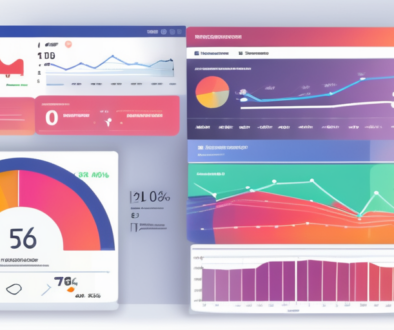SEO or SEM: Which Strategy Drives Better Results?
SEO and SEM are two commonly used terms in the world of online marketing. While they are often used interchangeably, they actually refer to two distinct strategies with different goals and approaches. Understanding the differences between SEO (Search Engine Optimization) and SEM (Search Engine Marketing) is crucial for any business looking to improve their online presence and drive more traffic to their website.
Understanding the Basics of SEO and SEM
Defining SEO: An Overview
SEO, or Search Engine Optimization, is the process of improving a website’s visibility and organic (non-paid) traffic from search engine results. The goal of SEO is to optimize a website’s content, structure, and technical aspects to rank higher in search engine results pages (SERPs) for relevant keywords.
One of the primary aims of SEO is to attract organic traffic, which refers to visitors who find your website through a search engine like Google, without the need for paid advertising. Increased organic traffic can lead to higher visibility, more brand exposure, and potentially more conversions and sales.
Effective SEO strategies involve a combination of on-page optimization, such as keyword research, content creation, and meta tag optimization, as well as off-page optimization, including link building and social media marketing. By implementing these strategies, websites can improve their search engine rankings and attract more qualified traffic.
Defining SEM: An Overview
SEM, or Search Engine Marketing, encompasses the broader strategy of utilizing both organic and paid advertising to drive traffic to a website. It involves the promotion of a website through paid search engine listings and other online marketing techniques.
SEM primarily focuses on paid traffic, commonly known as pay-per-click (PPC) advertising. Businesses bid on keywords relevant to their products or services, and when a user searches for those keywords, their ads may appear at the top of the search results page.
In addition to PPC advertising, SEM can also include display advertising, remarketing campaigns, and social media advertising. These tactics help businesses increase their online visibility, reach a wider audience, and drive targeted traffic to their websites. By combining SEO and SEM strategies, businesses can create a comprehensive digital marketing approach that maximizes their online presence and drives sustainable growth.
The Core Differences Between SEO and SEM
The Role of Organic Traffic in SEO
One of the key differences between SEO and SEM is the emphasis on organic traffic. SEO aims to increase organic traffic by optimizing website elements such as meta tags, headings, and content relevance. It also involves building high-quality backlinks and improving the overall user experience of the website.
Organic traffic is valuable as it indicates that users are finding your website naturally and are more likely to be interested in your products or services. However, achieving higher organic rankings can take time and effort, as search engines use complex algorithms to determine the relevance and quality of a website.
Optimizing for organic traffic involves a multifaceted approach that includes keyword research, on-page SEO, and technical optimizations. By creating high-quality, relevant content that resonates with your target audience, you can improve your website’s visibility in search engine results pages (SERPs). Additionally, engaging in ethical link-building practices can help establish your website’s authority and credibility in the eyes of search engines.
The Role of Paid Traffic in SEM
In contrast, SEM relies heavily on paid traffic. By bidding on targeted keywords, businesses can ensure that their ads appear prominently in search engine results. This immediate visibility can be beneficial for driving relevant traffic to a website, especially for new businesses or those seeking a quick boost in online visibility.
Paid traffic can be particularly useful for time-sensitive promotions, product launches, or events. However, it’s important to note that once you stop investing in paid ads, your website’s visibility will decrease. Additionally, PPC advertising requires careful monitoring and optimization to ensure a positive return on investment (ROI).
SEM campaigns can be further optimized through ad extensions, ad scheduling, and geographic targeting to reach specific audiences. By continuously analyzing performance metrics and adjusting your SEM strategy accordingly, you can maximize the effectiveness of your paid advertising efforts and drive valuable traffic to your website.
The Importance of Keywords in SEO and SEM
Keyword Research for SEO
Keywords play a crucial role in both SEO and SEM. In SEO, keyword research is essential for identifying the terms and phrases users are searching for to find businesses like yours. By incorporating these keywords naturally into your website content, you can increase your chances of ranking higher in search results.
Keyword research involves finding relevant, high-volume keywords with proper intent. Additionally, identifying long-tail keywords (more specific and longer phrases) can help target a niche audience and improve your website’s visibility for specific search queries.
Moreover, understanding user search behavior and trends is key to successful keyword research. By analyzing search data and user intent, businesses can tailor their content to meet the needs and expectations of their target audience, ultimately driving more organic traffic to their websites.
Keyword Bidding in SEM
In SEM, keyword bidding is a core component of achieving visibility in paid search engine listings. Bidding involves determining which keywords are most relevant to your business and setting a maximum bid amount you’re willing to pay when a user clicks on your ad.
Effective keyword bidding requires careful budget management and ongoing optimization. It is crucial to select keywords that are relevant, have reasonable search volume, and are not excessively competitive to ensure maximum ROI from your paid advertising campaigns.
Furthermore, monitoring and adjusting your keyword bids based on performance data is essential for SEM success. By continuously refining your keyword strategy and ad campaigns, you can improve click-through rates, conversion rates, and overall campaign efficiency, leading to a higher return on investment for your advertising efforts.
The Impact of SEO and SEM on Website Visibility
How SEO Improves Website Visibility
SEO significantly impacts website visibility by helping businesses rank higher in organic search engine results. By optimizing various aspects of your website, such as content, meta tags, and user experience, you increase the likelihood of search engines recognizing your website and promoting it to users searching for relevant terms.
Higher visibility in search results means more exposure for your brand, increased click-through rates, and ultimately more potential customers visiting your website. SEO is a long-term strategy that requires continuous effort and adjustment to stay ahead of competitors and search engine algorithm updates.
One important aspect of SEO that often gets overlooked is the role of backlinks. Backlinks are links from other websites that direct traffic to your site. Search engines view backlinks as a vote of confidence in your content, which can positively impact your website’s visibility. Building a strong backlink profile through quality content and outreach efforts can significantly boost your SEO efforts and improve your website’s ranking.
How SEM Enhances Website Visibility
SEM, through paid advertising, can provide a quick boost to your website’s visibility. By bidding on relevant keywords, your ads can appear at the top of search engine results pages, ensuring immediate exposure to potential customers.
SEM allows you to target specific demographics, locations, or interests, making it a versatile tool for reaching your target audience. Additionally, SEM provides valuable data and insights, allowing you to track and analyze the performance of your advertising campaigns and make necessary adjustments.
Another key benefit of SEM is the ability to retarget users who have previously visited your website. By using tools like remarketing lists, you can show targeted ads to users who have already shown interest in your products or services. This can lead to higher conversion rates and improved ROI on your advertising spend. Utilizing SEM in conjunction with SEO can create a powerful digital marketing strategy that maximizes your website’s visibility and drives valuable traffic.
The Pros and Cons of SEO and SEM
Advantages and Disadvantages of SEO
SEO offers several advantages, including long-term sustainability, increased brand credibility, and cost-effectiveness compared to paid advertising. With SEO, you are not directly paying for every click or impression, making it a more economical option in the long run.
One of the key benefits of SEO is its ability to generate organic traffic, which means that people are finding your website through search engine results without any paid promotion. This not only saves you money but also builds trust with your audience. When users see your website ranking high on search engine pages, it gives them confidence that your brand is reliable and authoritative.
However, SEO has its limitations and challenges. It requires time and effort to see significant results, and there is no guarantee of achieving top rankings. The constantly evolving nature of search engine algorithms also means that SEO strategies must adapt and evolve to maintain optimal performance.
Moreover, SEO involves a comprehensive approach that goes beyond just keyword optimization. It includes factors such as website structure, user experience, and content quality. This means that you need to invest in creating valuable and engaging content, as well as ensuring that your website is user-friendly and easy to navigate.
Advantages and Disadvantages of SEM
SEM provides immediate visibility and control over your marketing campaigns. With paid advertising, you have the power to determine precisely where and when your ads will appear. This flexibility allows for quick adjustments based on performance and audience feedback.
In addition to immediate visibility, SEM also offers precise targeting options. You can choose specific demographics, locations, and even the time of day when your ads will be displayed. This level of control ensures that your ads are reaching the right audience at the right time, increasing the chances of conversion.
However, SEM can be costly, especially for competitive industries or popular keywords. It requires careful monitoring and optimization to ensure a positive return on investment. Ad fatigue and ad blindness can also occur, where users become less responsive to ads over time.
Furthermore, while SEM can drive instant traffic to your website, it does not guarantee long-term sustainability. Once you stop running paid ads, your visibility and traffic may decline. This is why many businesses choose to combine SEM with SEO to create a comprehensive online marketing strategy that balances immediate results with long-term growth.
In conclusion, SEO and SEM are two distinct strategies that serve different purposes. SEO focuses on improving organic visibility through optimizing website elements and user experience, while SEM encompasses both organic and paid advertising to drive traffic. Both strategies have their advantages and disadvantages, and a comprehensive online marketing strategy may incorporate elements of both SEO and SEM to maximize visibility, reach, and conversion potential.



